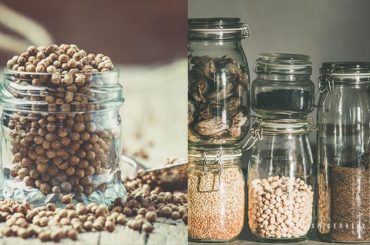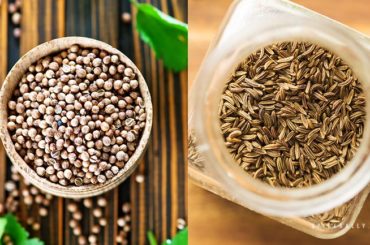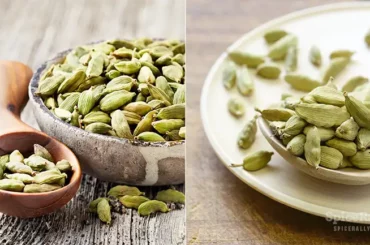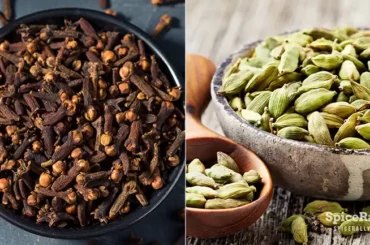Have you ever tried Filipino food? When you enter a Filipino’s home, they will usually greet you with “Kumain ka na ba?” which means “Have you eaten?” and will still offer you food regardless of whether you say yes or no. It’s no wonder that Filipino cuisine has been regarded as one of the best cuisines in the world. But, just like any other good recipe, there are some secrets to it. There’s more than just the soy sauce and vinegar that you often hear.
Accordingly, the Filipino kitchen uses essential spices in their cooking such as:

Filipino dishes may seem easy to make, but making them taste as authentic as possible is the real challenge here. So, how exactly do you make your food capture that authentic Filipino taste? What exactly goes in the dishes that make it taste just like every Filipino mom’s cooking? Let us get started from here.
9 Essential Spices In Filipino Cooking
The secret is to use spices in Filipino cooking. Filipino spices are added because blandness is not even an option for their dishes, just like their neighboring countries.
Despite being taught foreign cultures from other countries, the Filipino people have found a way to incorporate these influences and develop their own version of them. Thus, here are the nine essential spices used in most kitchens in the Philippines.
01 – Bay leaf (Laurel)
The bay leaf contains a strong and pungent taste that meshes well with Filipino dishes. The leaf can be used in various ways–from incorporating them in meat sauces and dips to garnishing them on main dishes like Menudo or Adobo.
The leaf isn’t typically eaten and is taken out before serving, but people commonly just set the leaf aside while eating. In addition to its flavor, Bay leaves may also improve hair health and digestion.
On your way to knowing the Filipino spices, you may be interested in discovering something about how to cook with saffron. Just one snap and you will be directed to the saffron article right away.
02 – Garlic (Bawang)
Garlic is essential in Filipino cooking. The more garlic cloves added, the better. Pretty much every Filipino dish requires garlic. Philippine garlic tends to have smaller bulbs but still provides an intense aroma and taste.
It’s a foolproof way of making a dish much tastier. No wonder many Filipinos enjoy the flavor of garlic. This spice also works as a powerful antibiotic and helps to protect the heart.
03 – Tamarind (Sampalok)
Sampalok is a spice with a distinct sweet and sour flavor. It’s commonly used as a key ingredient for making sour dishes. Although there are other kinds of souring agents, tamarind still remains the most popular spice to be used in that way.
Sinigang is a popular Filipino dish that calls for the use of tamarind. Moreover, tamarind has anticancer properties and potential protection against liver diseases.
04 – Ginger (Luya)
Ginger is a beloved spice in the majority of Asian cuisines, so it’s no stranger to Filipino dishes. It’s used to balance out the solid meaty flavor in dishes, providing an intense aroma and a slightly peppery and sweet taste.
Ginger is commonly found in Filipino soups like Lugaw, Arroz Caldo, and Tinola. And, this also relieves pain such as menstrual and arthritis pains and improves blood sugar regulation.
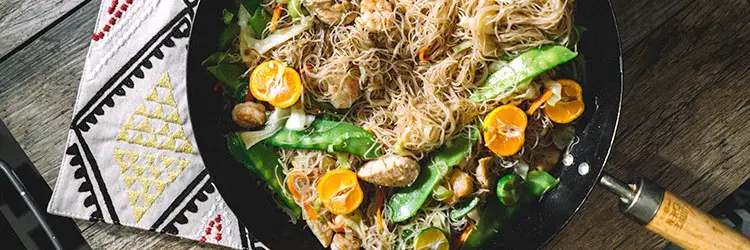
05 – Star Anise
The Chinese brought the star anise when they visited the Philippines way back in the early 9th or 10th century. Similar to bay leaves, the star anise isn’t meant to be eaten but rather placed on the dish while cooking to elevate its flavor. It can also serve as a garnish display to make more appealing meals.
Star anise is used in dishes such as Beef Pares, Bulalo, Humba, Pork Asado, and other Filipino-Chinese dishes. Star anise also helps to improve digestion and reduce cramps and nausea.
06 – Black Pepper (Paminta)
Black pepper is a versatile spice, appearing in many forms such as powdered, crushed, or using the whole peppercorn itself. It’s been coined as the “King of Spices”, providing a flavor profile of piney and citrusy notes.
Chicken Tinola, Pork Menudo, Afritada are some of the popular Filipino dishes that are seasoned with black pepper.
While Filipino cooking employs black pepper, Ceylon cuisine uses red chili as one of their staples. Check out here to know more about the Ceylon spices
07 – Annatto (Atsuete)
Annatto is a spice that has a natural red food coloring. It’s typically sold in either a paste or powdered form for cooking uses. Its flavor is usually described as peppery with a hint of nutmeg. Although it is categorized under spices in Filipino cooking, it is often used to add color to dishes.
Kare-kare and Sotanghon Guisado are some of the dishes that call for annatto. Kwek-kwek, a popular Filipino street food, would sometimes get its appealing orange color from annatto, although some street vendors would use ketchup instead. Additionally, annatto is associated with health benefits like reducing inflammation and supporting healthy eyes.
08 – Chili Pepper (Sili)
Similar to its neighboring countries, the chili pepper is typically simmered in coconut milk to even out the spiciness of Filipino meals such as Bicol Express or Ginaatan. The chili itself can be used to garnish a regular dish or a dipping sauce, cut open with a spoon or a fork if that person prefers some spice.
Nowadays, a growing number of Filipino people are enjoying the hot spicy taste. Chili peppers are known to be rich in vitamins and help to lower blood pressure.
09 – Lemongrass (Tanglad)
Lemongrass is a popular spice for dishes and dipping sauces that need a citrusy taste. It is very flavorful and fragrant. A common method is cooking fresh leaves to enhance the flavor.
Tinola, Chicken Tanglad, and Lechon are well-known Filipino dishes that use lemongrass. This spice alleviates vomiting and stomach and intestinal cramps.
What Common Spices Are Used In Filipino Cooking?
Spices are a fantastic way to elevate the taste and add complexity to the dish. Although most Filipino foods are accompanied by soy sauce or vinegar, spices play a vital role in completing the recipe.
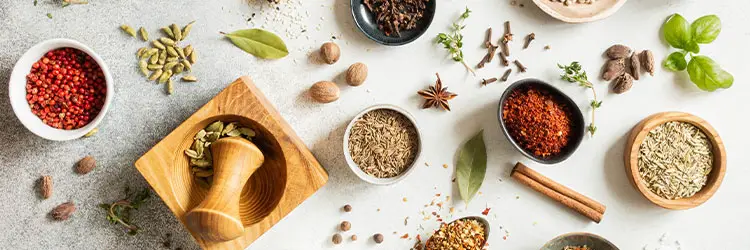
In all 17 regions of the Philippines, each has its own take on the typical Filipino food. One province may use a different set of spices compared to the other one, which makes Philippine cuisine diverse and unique.
But, the nine common Filipino spices necessary for cooking their native dishes are bay leaf, garlic, tamarind, ginger, star anise, black pepper, annatto, chili pepper, and lemongrass.
If you are interested in having more insights into spices, we have an article here about categories of spices.
What Are The Most Common Flavors In Philippine Cuisine?
Philippine cuisine can be considered diverse with many flavors. The Philippines has been a heavily colonized country, resulting in various cultures. There are popular Filipino dishes that have been influenced by Spain, China, and the US.
Of course, these dishes have been adjusted to serve the Filipino palate.
Filipino food leans more towards sweet, salty, sour, and sometimes bitter flavors. The spices used in Filipino cooking aren’t the only ingredients building up that flavor; the dishes also rely upon layers of fruits and vegetables to intensify the taste.
Although many Filipinos love eating spicy food, their native dishes are not as spicy-hot as their Asian neighbors.
Depending on the region that you’re in, each province in the Philippines has its unique twist. Only certain areas prefer spicier dishes, while others desire that tangy taste.
Filipinos love incorporating condiments with their meal. A variety of dipping sauces typically accompanies these complex flavors. The sauces are usually the opposite of the dish to counteract the taste.
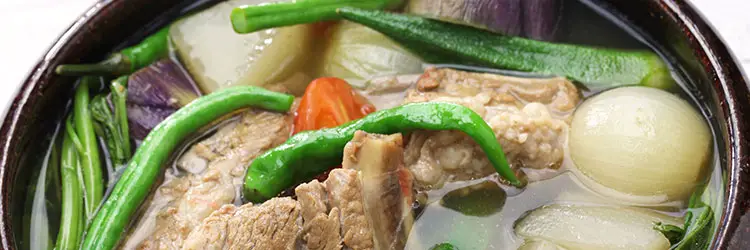
For example, eating a salty dish and dipping it in something sour.
Now, Asians love eating rice, and that’s no exception among Filipinos. It’s prevalent to eat rice, acting as a neutralizer if it is too salty or sour. It’s also a great way to cleanse the palate to avoid getting too saturated with the dish’s flavors.
What Spices Are Grown In The Philippines?
Ferdinand Magellan, a Portuguese navigator, aimed to reach the Spice Islands but “accidentally” went to the Philippines instead. The Spice Islands, also known as the Malaku Islands, are located in the east of Indonesia, where abundant spices such as nutmeg.
There are a plethora of spices in the Philippines readily available. Although technically there are no spices that originated from the country, many kinds of herbs are being grown today.
These spices include but are not limited to ginger, annatto, garlic, onion, chili, pandan, bay leaf, and many more. Coming from herbal plants, Filipinos were resourceful enough to use them in other ways besides cooking.
Herbal plants such as Dama de Noche, Acacia, Makabuhay (Tinospora rumphii Boerl), and Guava were all used to treat certain diseases or illnesses, paving the way for herbal medicine.
More herbal medicinal plants are being grown in the islands compared to spices. But, thanks to modern technology, a variety of spices are readily available in the Philippines.
Conclusion
As you have read above, The Philippines’ cuisine comes from an array of influences from many countries, which helped pave the way for its most known dishes. The rich history from the time of the Spaniards up until the Americans arrived can be seen with how Filipinos use spices and cook food.
The Philippines has also borrowed influences from neighboring Asian countries, showing how similar yet different their food styles are. If you haven’t tried any Filipino food yet, you surely won’t be disappointed with its taste!

